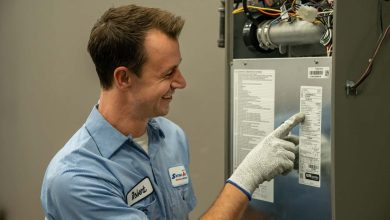In today’s rapidly evolving work landscape, businesses are recognizing that the design of their physical work environments can significantly impact employee well-being, safety, and overall productivity. The integration of human factors principles has emerged as a pivotal strategy to create workspaces that not only prioritize the comfort of employees but also boost efficiency. This article explores the profound significance of human factors in designing safe and efficient work environments, delving into practical strategies that businesses can adopt to foster employee well-being.
Understanding Human Factors in Workplace Design
Human factors encompass a range of considerations, including cognitive, physical, emotional, and social aspects of human behavior. When applied to workplace design, these factors play a crucial role in shaping how employees interact with their surroundings. It’s not just about aesthetics; it’s about crafting spaces that support and enhance human capabilities.
The Impact of Human Factors on Employee Well-being
Workplace well-being goes beyond physical comfort. A well-designed workspace positively influences employee engagement, job satisfaction, and even mental health. When employees feel comfortable and supported, they are more likely to perform their tasks efficiently, collaborate effectively, and experience reduced stress.
Ergonomic Workspace Design: A Foundation for Safety
Ergonomics is a fundamental aspect of human factors in workplace design. By creating ergonomic workstations, businesses can mitigate physical strain, reduce the risk of musculoskeletal disorders, and enhance overall health.
Designing Comfortable Workstations
Comfort should be a priority when designing workstations. Adjustable chairs, ergonomic keyboards, and monitors positioned at eye level are just a few components that contribute to a comfortable work setup.
Reducing Physical Strain with Proper Seating
Appropriate seating not only ensures comfort but also supports proper posture. Ergonomic chairs with lumbar support and adjustable features can significantly reduce the strain on employees’ backs and necks.
Efficient Space Planning for Movement
An efficiently planned workspace allows employees to move freely and access resources without unnecessary obstacles. A well-organized layout can enhance workflow, prevent congestion, and minimize distractions.
Cognitive Factors in Work Environment Design
Cognitive factors such as focus, concentration, and mental clarity also impact workplace productivity. Designing with cognitive well-being in mind can enhance employees’ ability to stay engaged and attentive.
Minimizing Distractions for Improved Focus
Open office layouts have become popular, but they can introduce distractions. Thoughtful design solutions, such as quiet zones and soundproof partitions, can create environments conducive to focused work.
Enhancing Lighting for Optimal Cognitive Function
Natural and artificial lighting influence cognitive performance. Access to natural light and well-designed lighting systems can reduce eye strain, enhance mood, and promote alertness.
Emotional Well-being and Human Factors
Employee emotional well-being is essential for maintaining a positive work environment. Incorporating elements that address emotional needs can lead to increased job satisfaction and reduced stress levels.
Incorporating Nature Elements for Stress Reduction
Biophilic design principles involve integrating natural elements into the workspace. Indoor plants, nature-inspired artwork, and views of greenery can create a calming atmosphere that promotes relaxation and reduces stress.
Personalization and Its Positive Impact
Allowing employees to personalize their workspaces can foster a sense of ownership and belonging. Personal items, artwork, and customizable furniture contribute to a more comfortable and emotionally satisfying work environment.
Safety Measures and Human Factors Integration
A safe workplace is paramount. Integrating human factors principles into safety measures ensures that employees can navigate the workspace with confidence, especially during emergencies.
Fire Safety and Emergency Exits
Clearly marked emergency exits, well-lit escape routes, and regular drills contribute to a safer workplace. Human factors come into play when designing evacuation plans that are intuitive and easy to follow.
Accessible and Clear Signage
Effective signage helps employees navigate the workspace efficiently. Consideration of font size, contrast, and placement is crucial to ensure that signage is accessible to everyone, including those with visual impairments.
Technology and Human-Centered Workspaces
Incorporating technology that aligns with human factors enhances employee experiences and productivity.
User-Friendly Interfaces and Tools
Whether it’s software interfaces or hardware tools, user-friendliness is key. Intuitive designs and user-centered features can streamline tasks, reduce frustration, and improve overall efficiency.
Adaptable Technologies for Diverse Needs
Different employees have varying technological needs. By offering adaptable technology solutions, businesses accommodate a wide range of preferences and abilities, promoting inclusivity.
Employee Engagement and Productivity
The integration of human factors in workplace design ultimately leads to improved employee engagement and productivity.
Employees who feel valued and supported are more likely to contribute actively to their teams. A well-designed workspace that considers their physical, cognitive, and emotional needs fosters a sense of belonging and motivates them to perform at their best.
Conclusion
Designing safe and efficient work environments requires a holistic approach that embraces human factors principles. By prioritizing employee well-being, considering ergonomic needs, promoting cognitive clarity, and fostering emotional satisfaction, businesses can create workplaces that inspire productivity and job satisfaction. The harmonious integration of technology, safety measures, and personalized touches completes the equation, resulting in a work environment that not only enhances efficiency but also genuinely cares for its employees’ welfare.
Incorporating human factors isn’t just a design trend; it’s a commitment to valuing the people who power your business. As Jumpseat, you understand the importance of tech for people’s sake, and the application of human factors in workplace design perfectly aligns with this ethos. By investing in your employees’ comfort, health, and well-being, you’re setting the stage for a thriving and successful workplace that stands out in today’s competitive landscape.




